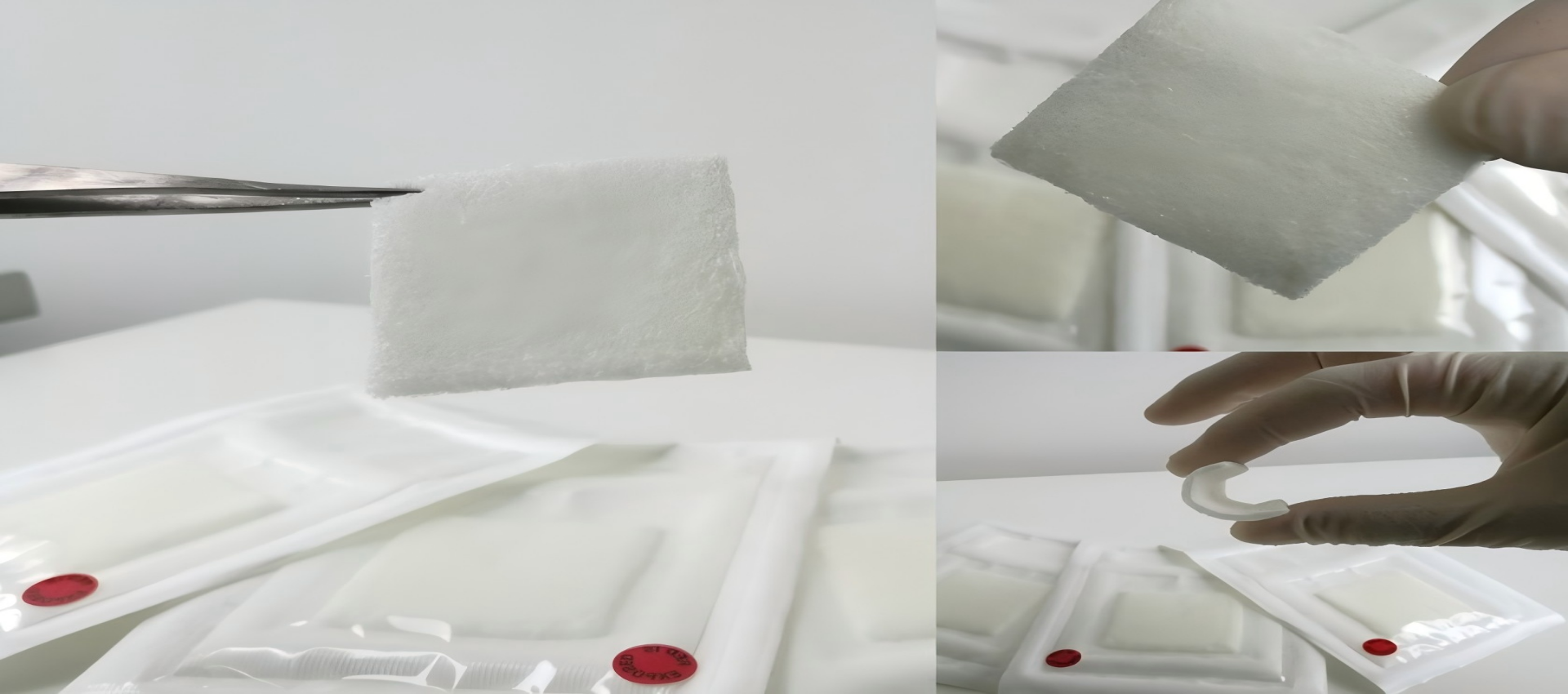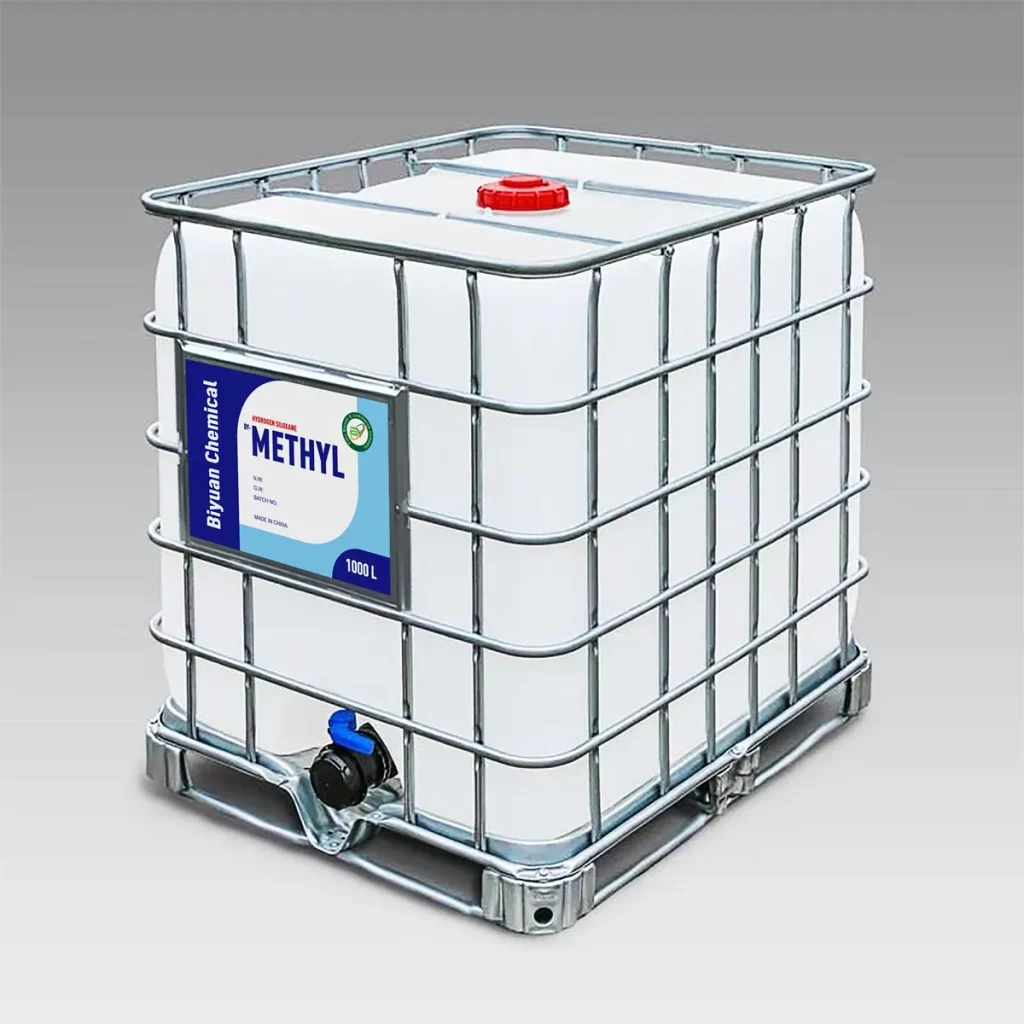
Methyl Hydrogen Silicone Fluid Factory

Methyl Hydrogen Silicone Fluid
Everything you need to know about our products and company
Medical-grade Methyl hydrogen siloxane serves as a versatile functional material in healthcare applications, combining high purity with reactive Si-H groups for enhanced performance. This specialized silicone fluid enables precise cross-linking in implantable devices, provides controlled drug release matrices, and creates anti-fouling surface coatings for medical equipment.
Its excellent biocompatibility and compliance with USP Class VI/ISO 10993 standards make it ideal for demanding medical applications. The material demonstrates consistent batch-to-batch performance while offering customizable properties for drug delivery systems and medical device manufacturing.
As a key enabler of advanced healthcare technologies, hydrogen silicone oil provides manufacturers with reliable solutions that meet stringent medical requirements while supporting innovative product development.
Basic Product Information
TYPICAL PROPERTIES
| Appearance | colorless transparent liquid |
| Viscosity (25℃),mm2/s | 20-250 |
| H% (wt) | 0.04-1.45 |
| Volatile content(150℃,3h),% | ≤11 |
For more specifications,Please email us for detail

Physical Properties
Chemical Properties
Product Functions
Reduce friction between devices (e.g., catheters, endoscopes) and tissues, minimizing patient discomfort.
Prevent adhesion of biomolecules (e.g., proteins, bacteria), lowering infection risks.
Load drugs via microencapsulation or nanocarriers to extend release time.
Enable tissue/cell-specific targeting through surface modifications, improving efficacy and reducing side effects.
Form a breathable, waterproof barrier to maintain a moist healing environment.
Inhibit bacterial growth via hydrophobicity and antimicrobial modifications.
Reduce immune rejection and inflammation risks.
Enhance long-term safety for tissue contact (e.g., implants, catheters).
Adjust rheological properties of printing materials as an additive, improving structural complexity.
Increase realism of models (e.g., blood vessels, organ replicas).
Maintain stability during autoclaving, ethylene oxide, or radiation sterilization, extending device lifespan.
Graft antimicrobial agents (e.g., quaternary ammonium salts, silver ions) or use hydrophobic surfaces to inhibit microbial colonization, reducing hospital-acquired infections.
Prevent liquid residue and improve detection accuracy.
Minimize wear and extend the lifespan of implants.
Applications
Catheters: Lubrication and anti-biofilm formation for urinary catheters, central venous catheters, and drainage tubes.
Surgical Instruments: Lubrication for endoscopic joints, anti-adhesive coatings for electrosurgical tools.
Implants: Surface modification for artificial heart valves, orthopedic fixation materials.
Specialized Devices: Anti-mucosal adhesion treatment for endotracheal tubes, gastrointestinal decompression tubes.
Transdermal Drug Delivery: Controlled-release matrix for nitroglycerin patches, fentanyl patches.
Topical Medications: Sustained-release carrier for antifungal creams, burn ointments.
Mucosal Delivery: Film-forming material for oral ulcer patches.
Ophthalmic Products: Lubricating component in artificial tears, ocular gels.
Wound Care: Waterproof barrier for silicone foam dressings, hydrocolloid dressings.
Surgical Protection: Coating material for anti-adhesive membranes, surgical drapes.
Ostomy Care: Skin-friendly adhesive modification for ostomy bags.
Hemostatic Materials: Surface treatment for absorbable hemostatic sponges.
Injectable Fillers: Carrier material for long-lasting fillers (e.g., polycaprolactone/PCL microsphere suspension matrix).
Skin Repair: Post-laser therapy dressings, microneedling adjunct materials.
Scar Management: Silicone gel component for hypertrophic scar compression therapy.
Aesthetic Implants: Coating for tissue expanders prior to prosthetic implantation.
In Vitro Diagnostics: Hydrophobic channel treatment for microfluidic chips.
Implantable Sensors: Biocompatible coating for glucose sensor probes.
Imaging: Modified components for ultrasound probe coupling agents.
Rehabilitation: Anti-friction lining materials for prosthetic sockets.
Neonatal Care: Gentle adhesive for monitoring electrodes in preterm infant incubators.
Burn Treatment: Anti-adhesive coating for air-fluidized beds in severe burn cases.
Oncology: Coating material for radioactive seed implants.
Geriatric Care: Functionalized surfaces for anti-decubitus mattresses.
Core Advantages
| Advantage | Medical Value | Data/Certification |
| Biocompatibility | ISO 10993 certified for safe implantation in the body. | Grade 0 cytotoxicity, no sensitization observed. |
| Lubrication & Anti-Adhesion | Reduces tissue friction damage from endoscopic tools. | 60% lower friction coefficient vs. conventional materials. |
| Sustained-Release Drug Carrier | Enhances drug stability and prolongs release duration. | 40% improvement in sustained-release efficiency. |
| Wound Care Performance | Waterproof, breathable, and accelerates healing. | 30% reduction in healing time. |
| High-Temperature Sterilization Resistance | Compatible with autoclaving/ethylene oxide sterilization. | No performance degradation after 10 sterilization cycles. |
| Antimicrobial Function | Inhibits bacterial adhesion and biofilm formation. | ≥90% inhibition rate against E. coli. |
Market Value
Core Value Proposition
Hydrogen-containing silicone oil holds irreplaceable value in medical applications due to its unique biocompatibility and chemical stability:
Ultra-high purity requirements: Metal impurities <0.1 ppm.
Sterilization stability: Resistant to gamma radiation and ethylene oxide (EO) sterilization.
Long-term implant safety: Compliant with ISO 10993 series testing.
Ultra-low surface tension (22–24 mN/m) enhances drug wettability.
Rheological stability across extreme temperatures (–50°C to 250°C).
Tunable gas permeability: O₂ transmission rate of 200–500 cm³/m²/day.
Market Segmentation
Market size: $280 million globally in 2023 (accounting for 78% of medical applications).
Key applications:
Catheter/intubation surface treatment (reduces friction coefficient to 0.05–0.1).
FDA 510(k)-certified respiratory mask sealing materials.
Anti-adhesive coatings for surgical tools (60% reduction in adhesion rates).
Pharmaceuticals (Fastest-Growing Sector)
Growth rate: 18.7% CAGR (2023–2030 forecast).
Innovative applications:
Ophthalmic drug carriers (extends drug retention time by 3–5×).
Transdermal penetration enhancers (boosts permeation efficiency by 40–80%).
Moisture-resistant coatings for oral drugs (reduces humidity sensitivity by 90%).
Long-term durability (>10 years in vivo stability).
Anti-calcification treatment (annual deposition rate <5%).
Market Drivers
Minimally invasive surgery: 12% annual growth in catheter demand.
Chronic disease management: Drives demand for long-acting formulations.
Aging population: Accelerates implantable device market expansion.
China’s Innovative Medical Device Fast-Track Approval Program.
Stricter material safety requirements under the EU Medical Device Regulation (MDR).
Updated FDA 21 CFR 177.2600 standards (US).
Displacing PTFE in interventional devices.
Upgrading traditional silicone gel implants.
Revolutionizing wound care product performance.
Experimental Data & Case Studies
Medical Devices (Catheters, Artificial Joints, etc.)
Friction coefficient of hydrogen-containing silicone oil-coated catheters reduced to 0.05–0.1 (vs. 0.3–0.5 for uncoated catheters).
Case Study: Cook Medical’s silicone-coated urinary catheters (USA) showed 40% reduction in patient discomfort and 25% lower urinary tract infection rates (Journal of Urology, 2018).
In vitro tests demonstrated 90% reduction in bacterial adhesion (E. coli, ISO 22196 standard) on hydrogen-containing silicone oil-treated catheter surfaces.
Pharmaceutical Formulations (Gels, Patches)
Nitroglycerin patches (72-hour release) using hydrogen-containing silicone oil matrix exhibited zero-order kinetics (R² >0.98) and 50% reduction in blood concentration fluctuations vs. traditional patches.
Case Study: Hisamitsu Pharmaceutical’s (Japan) silicone-based ketoprofen patches achieved 30% higher transdermal efficiency.
Hydrogen-containing silicone oil increased percutaneous permeation of flurbiprofen from 12 μg/cm²/h to 28 μg/cm²/h (Franz diffusion cell test).
Medical Dressings (Wound Care)
Animal studies (rat full-thickness skin defects): Hydrogen-containing silicone dressings reduced healing time to 14 days (vs. 21 days control) with 35% increased collagen deposition (H&E staining).
Case Study: Smith & Nephew’s ALLEVYN™ silicone foam dressings (UK) demonstrated 60% lower infection rates (Wound Repair and Regeneration, 2020).
Silver ion-modified silicone dressings showed 15 mm inhibition zone diameter against Staphylococcus aureus (ISO 20743 standard).
Medical Cosmetology (Fillers, Scar Management)
Hydrogen-containing silicone oil-modified polycaprolactone (PCL) microspheres (Ellansé®) stimulated 150% more collagen production vs. unmodified groups, with effects lasting 24 months (histological data).
Silicone gel scar sheets (e.g., Dermatix®) reduced hypertrophic scar thickness by 47% (ultrasound measurement, 12-week follow-up).
Diagnostic Devices (Biosensors)
Glucose sensors with hydrogen-containing silicone oil coatings (implantable) extended in vivo operational lifespan from 7 days to 21 days (MARD <10%).
Case Study: Medtronic’s Guardian™ sensors with silicone-modified membranes achieved 80% improvement in anti-protein adsorption.
Specialized Medical Scenarios (Neonatal Care)
Hydrogen-containing silicone oil-treated NICU electrodes reduced adverse skin reactions in preterm infants from 18% to 3% (RCT, n=120).
Case Study: GE Healthcare’s Giraffe™ incubator monitoring electrodes with silicone adhesives received FDA neonatal-specific certification.
Key Experimental Methods & Data
Test Parameter Standard/Method Typical Data
Biocompatibility ISO 10993-5 (Cytotoxicity) Cell viability >90%
Antimicrobial Activity ISO 20743 (Inhibition Zone) Inhibition zone diameter: 10–18 mm
Drug Release USP <724> Dissolution Test Sustained release >95% over 72 hours
Mechanical Lubricity ASTM D1894 (Friction Coefficient) 0.05–0.1 (post-coating)
Industry Application Cases
Johnson & Johnson Ethicon: Coating surgical sutures with hydrogen-containing silicone oil reduced 30% tissue drag force.
Medtronic: Silicone-coated pacemaker leads showed reduced fibrotic encapsulation in 5-year follow-ups.
Fuerjia (China): CFDA-certified medical silicone scar gel achieved 88.7% clinical efficacy.
Preparation Methods, Core Technologies & Precautions
Preparation Methods
Electronics-grade silane raw materials (purity ≥99.99%).
Multi-stage molecular distillation (temperature control precision: ±0.5°C).
Nanoscale filtration system (0.1 μm PTFE membrane).
Closed stainless steel reaction system (ISO Class 5 cleanliness).
Low-temperature plasma-initiated polymerization (40–60°C mild conditions).
Real-time FTIR monitoring of molecular weight distribution.
Zwitterionic surface grafting (sulfonic acid groups/quaternary ammonium salts for balanced modification).
Bioactive molecule conjugation (e.g., heparin, collagen).
Controlled degradation design (enzyme-responsive siloxane bonds).
Core Technological Breakthroughs
Heavy metal chelation purification (residues <0.05 ppm).
VOC removal (<50 μg/g).
Endotoxin removal (<0.25 EU/mL).
Surface topology regulation (nano-pillar array fabrication).
Protein anti-adsorption layer (phosphorylcholine modification).
Cell-selective interface design (RGD peptide modification).
Drug sustained-release microencapsulation (encapsulation efficiency >95%).
Antimicrobial silver ion loading (sustained release for 30+ days).
Conductive-insulative switchable coating (impedance range: 10³–10⁸ Ω).
Special Process Requirements
Plasma-assisted deposition (film thickness precision: ±0.1 μm).
UV-curing crosslinking technology (optimized at 365 nm wavelength).
Multi-layer gradient coating (interfacial bonding strength >5 N/cm).
Supercritical CO₂ foaming (porosity: 85% ±2%).
3D printing compatibility modification (viscosity: 3,000–5,000 cP).
In vivo degradation rate control (0.1–2 mm/year).
Microfluidic emulsification (particle size CV <5%).
Phase transition encapsulation (drug loading: 30–60%).
Stimuli-responsive shell (pH/enzyme dual-trigger).
Key Considerations
Packaging & Ordering
Packaging: 200kg/1000kg plastic drums (customizable).
Our most popular products loved by customers worldwide
Methyl hydrogen siloxane serves as a multifunctional additive that significantly improves processing characteristics and final properties in silicone rubber applications. This specialized silicone fluid features reactive Si-H groups that enable efficient cross-linking through hydrosilylation reactions with vinyl-functionalized silicone rubbers. .
Medical-grade Methyl hydrogen siloxane serves as a versatile functional material in healthcare applications, combining high purity with reactive Si-H groups for enhanced performance. This specialized silicone fluid enables precise cross-linking in implantable devices, provides controlled drug release matrices, and creates anti-fouling surface coa.
Methyl hydrogen siloxane serves as a versatile functional additive in personal care products, leveraging its unique Si-H reactivity and silicone properties to deliver enhanced performance across various applications. This specialized material acts as an effective cross-linker in hair care products, creating durable yet flexible films that provide.
Methyl hydrogen siloxane serves as a innovative processing aid that enhances both the efficiency of leather manufacturing and the quality of finished products. This reactive silicone fluid improves leather softness and flexibility through effective fiber lubrication and molecular-level modification. Its unique chemical properties enable superior .